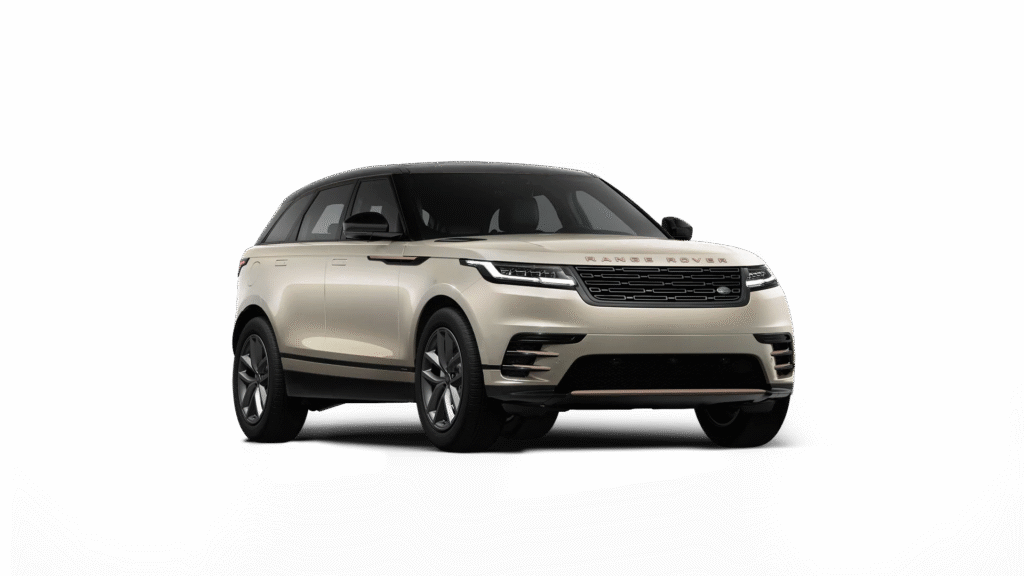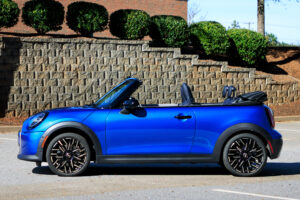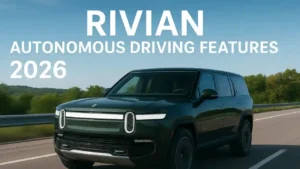The Range Rover Velar, originally launched in 2017, is poised to undergo a dramatic reinvention as a fully electric vehicle by 2027 as Range Rover Velar EV . Unlike its predecessors, this will be the first Velar conceived from the ground up as a battery-electric vehicle (BEV), marking a significant chapter in JLR’s transition toward electrification.
Platform & Architecture – EMA—Electrification Centric
At the heart of the Velar EV is JLR’s new EMA (Electric Modular Architecture) platform, purpose-built for electric powertrains in mid-size SUVs. Key features include-
- 800-volt architecture: Enables ultra-fast charging—up to 350 kW—allowing a 10–80% charge in approximately 20 minutes.
- High-efficiency motors: JLR’s in-house electric drive units boast around 4 to 4.5 miles/kWh and “most torque-dense” performance in class.
- OTA updates & smart ecosystem: The EMA supports over-the-air upgrades, advanced driver assistance systems (ADAS), seamless media streaming, and predictive maintenance via data-sharing—powered by Tata Communications’ MOVE platform.
Design – Sleek, Elegant, and Road-Focused
Early spy shots and renderings reveal a distinct departure from boxier SUVs –
- Form factor: Longer, lower, and broader than the outgoing Velar, with a more coupe-like silhouette and wagon-esque rear.
- Stylish cues: Frameless doors, flush-mounted handles, slim lighting units, and accentuated wheel arches for a dynamic, contemporary look.
- Lowered roofline and petite rear window: Evokes a sleek aesthetic; rear visibility may rely on digital mirrors, similar to Jaguar’s upcoming Type 00 concept.
- Utility touches: Spy shots show a front “frunk” and a wide-opening clamshell tailgate, suggesting generous cargo capacity.
Interior & Comfort -Minimalism Meets Luxury
The interior is expected to elevate both luxury and technology –
- Minimalist, tech-centric layout: Expect a clean dashboard, floating infotainment screens, limited physical buttons, and potentially a gear selector on the steering stalk.
- Premium materials and ambience: Soft-touch surfaces, ambient lighting, spacious layout with a flat floor, and advanced seats with massage and climate features.
- Enhanced practicality: The larger profile may accommodate an optional third row, appealing to family-oriented buyers.
Performance & Electric Specs – What We Can Infer
Official specs remain under wraps, but informed guesses include:
- Range: Possibly in the 300-mile (≈480 km) range, competitive with infotainment-driven rivals like the Porsche Macan EV.
- Charging capabilities: 800V system allowing up to 350 kW rapid charging.
- Handling & testing: Prototypes equipped with full roll cages tested at Nürburgring indicate JLR’s focus on chassis refinement despite increased EV weight.
Release Timeline – Launch Delays and Production Plans
Despite early optimism, the Velar EV rollout has been delayed –
- Original plan: Launch in late 2025 or spring 2026 for the 2027 model year.
- Revised timeline: Media reports suggest production now targeted for spring 2026, with sales possibly reaching 2027.
- Reasons for delay: JLR is prioritizing extended testing and aligning the launch with stronger EV market demand. These shifts may help maintain profitability by continuing hybrid and ICE sales.
Competitive Context
The Velar EV is poised to compete in the premium mid-size EV SUV segment –
- Key rivals: Porsche Macan EV, BMW iX, Audi Q6 e-tron Sportback, and Polestar 3.
- Distinct positioning: Blends luxury, refined styling, and off-road heritage—albeit with more on-road finesse. EMA’s efficiency, OTA systems, and bold styling could set it apart.
What Makes the 2027 Velar EV Stand Out
| Feature | Insight |
|---|---|
| Platform | EMA: 800V, efficient motors, OTA upgrades |
| Design | Sleek, coupe-like, frameless doors, distinctive rear |
| Interior | Minimalist luxury, potential third row, advanced comfort |
| Performance | Estimated ~300-mile range, fast charging, agile handling |
| Launch | Delayed to 2026/2027 amid cautious strategy |
| Competition | Positioned as a premium option with road-focused dynamics |
As of mid‑2025, official pricing hasn’t been released yet. However, several sources offer reasonable projections –
- A report suggests that U.S. pricing could start around USD 75,000.
- The Velar EV’s key competitor, the Porsche Macan Electric, ranges from approximately USD 78,000 (base RWD) to USD 105,300 (Turbo Electric)—a helpful benchmark for positioning the Velar EV in the market.
Possible variant tiers—inspired by traditional Range Rover trims—might include –
- Velocity/Base: Rear-wheel drive & standard range
- R‑Dynamic: Sportier tuning or AWD
- HSE / Autobiography: Luxury-focused, highest performance
While we don’t have verified variant names or specs, these tiers tend to align with JLR’s strategy across the Range Rover lineup.
Pros & Cons – What We Know (Including Legacy Insights)
Pros (Anticipated for the Velar EV)
- Sleek Electric Design
Futuristic aesthetics including flush door handles, thin lighting units, a coupe-like silhouette, and modernized fascia. - Cutting-Edge Platform
Built on the Electrified Modular Architecture (EMA), enabling 800 V rapid charging (10–80 % in ~20 minutes), efficient motors (4–4.5 mi/kWh), and integrated OTA upgrades. - Advanced Tech & Comfort
Expected to feature minimalistic cabin design, large screens, ambient lighting, massage seats, flat floor space, and next-gen connectivity via Tata’s MOVE platform. - Emerging Autonomy
Likely to support Level‑2+ hands‑free driving, with Level‑3 autonomy a future possibility. - Competitive Range & Charging
Projected ~300-mile range aligns well with segment peers like the Macan EV.
Cons (Based on JLR’s History & Community Feedback)
- Unproven Reliability
Legacy Velar models have mixed reliability reputations—reports of air suspension failure, expensive repairs, and module-related issues after warranty expire. “Rated worst for reliability… fabulous cars, just don’t act all surprised when the drama comes. - Software Concerns
EV software and user interface refinement remain uncertain—user skepticism is high. - Costly Ownership
Higher price of purchase and maintenance, consistent with Range Rover norms. - Charging Network & Environment
Fast charging is essential—but actual EV usability depends on network availability and software reliability. - Delayed Launches
JLR delayed production to spring 2026 owing to extended testing and market readiness—reflects model’s pre-launch hesitancy.
Comparative Snapshot
| Aspect | Pros | Cons |
|---|---|---|
| Design & Interiors | Sleek, modern, premium amenities expected | Limited real visibility pre‑launch; potential cost add‑ons |
| Tech & Performance | 800 V charging, efficient motor, autonomy-ready | Software quality and integration remain untested |
| Variants & Pricing | Projected to align with Macan EV tiering (~USD 75k+) | No confirmed pricing or variant structure yet |
| Ownership Reality | Innovative EV features following Range Rover heritage | Historically high maintenance costs, reliability concerns |
| Launch Timing | Spring 2026 start of production | Delays may continue based on testing outcomes |
Final Thought
The 2027 Range Rover Velar EV stands to impress with its refined design, modern EV platform, advanced connectivity, and aspirational luxury. It promises to blend the Range Rover ethos with electric innovation. However, buyers should stay cautious—reliability, software performance, pricing clarity, and delayed delivery schedules remain open questions.






